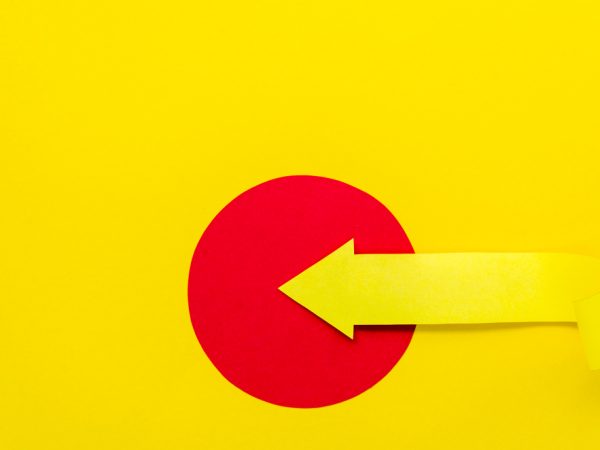The Rise of Gay AI: Technology Meets Identity and Inclusion | LGBTQ+ Tech 2025

The Rise of Gay AI: Technology Meets Identity and Inclusion
Artificial intelligence (AI) has become one of the most transformative forces in modern society, influencing how we communicate, work, and even express identity. As the world embraces diversity and inclusion, a new and meaningful conversation has emerged — the intersection of AI and LGBTQ+ representation, often referred to as “Gay AI.”
This concept goes beyond technology — it’s about the recognition of queer identity within the algorithms, datasets, and voices that shape digital life. The rise of Gay AI marks a new era where technology meets humanity, and inclusivity becomes a design principle rather than an afterthought.
What Is Gay AI?
“Gay AI” refers to the development, discussion, and design of artificial intelligence systems that recognize, respect, and represent LGBTQ+ identities and experiences.
In essence, it’s about making AI more inclusive — ensuring that chatbots, digital assistants, algorithms, and data systems reflect diverse identities instead of reinforcing narrow or biased norms.
Gay AI is not a specific machine or program; it’s a movement within technology and ethics to make artificial intelligence a reflection of all people — regardless of sexual orientation, gender identity, or expression.
The Importance of Representation in Technology
Representation matters — not only in media, politics, and education but also in technology. When AI systems are built without inclusive data, they can unintentionally erase or misrepresent marginalized groups.
For instance, early voice assistants often defaulted to female-sounding voices programmed for subservience, while facial recognition systems struggled to identify people of color or transgender individuals accurately.
Gay AI challenges these norms by advocating for representation that includes queer voices, diverse genders, and a variety of cultural experiences in data sets, coding practices, and product design.
How Bias Enters Artificial Intelligence
AI is not inherently biased — people are. The bias comes from the data used to train these systems, which often reflects existing social inequalities. When datasets lack diversity, AI “learns” narrow worldviews.
For example:
- Image recognition may fail to identify same-sex couples as families.
- Language models might associate “gay” or “trans” with negative terms due to historical data bias.
- Content moderation systems might flag LGBTQ+ discussions as inappropriate.
Gay AI seeks to correct this by training algorithms on more representative and balanced datasets — reducing prejudice and increasing fairness across digital platforms.
Inclusive AI Development: How It Works
Building inclusive AI involves both technical adjustments and ethical frameworks. Developers working on Gay AI or diversity-focused systems prioritize:
- Diverse Data Sets: Ensuring that training data includes a wide spectrum of identities, relationships, and experiences.
- Bias Testing: Continuously evaluating AI outputs for unfair or discriminatory results.
- Inclusive Design Teams: Involving LGBTQ+ individuals in the design, testing, and ethical review process.
- Transparent Algorithms: Allowing public scrutiny and feedback to ensure accountability.
The result is technology that understands and represents people more accurately — not as stereotypes, but as individuals.
Gay AI in Voice, Language, and Expression
One of the most visible examples of Gay AI is in voice and language technologies. Digital assistants like Siri, Alexa, and Google Assistant originally had gendered voices and behaviors. In recent years, companies have introduced gender-neutral and inclusive voice options, marking a step toward more inclusive AI experiences.
Startups have even experimented with voice personas that represent queer identities — not as caricatures, but as authentic expressions of diversity. Language models are also evolving to use gender-inclusive language and avoid heteronormative assumptions.
Gay AI helps users feel seen and respected by ensuring that their interactions with technology reflect their true identities.
The Ethical and Cultural Impact of Gay AI
The emergence of Gay AI raises important ethical and cultural questions. Should AI have a “sexual orientation”? Can machines express identity, or are they simply reflecting human input?
While AI itself does not possess feelings or gender, the way it’s designed shapes human perception. A voice assistant that only responds to binary pronouns, for example, reinforces exclusion. Meanwhile, one that recognizes nonbinary identities normalizes diversity and inclusion.
Gay AI therefore becomes a cultural movement — not about giving AI human identity, but ensuring that human identity is respected within AI systems.
How Gay AI Promotes Inclusion in the Tech Industry
The development of Gay AI also pushes tech companies toward more inclusive hiring, ethical development, and diversity in leadership. When companies commit to designing inclusive systems, they also need diverse perspectives at the table.
This creates opportunities for LGBTQ+ engineers, researchers, and designers to influence how technology evolves. The goal is not just to make products inclusive but to ensure that the people building them reflect the diversity of those using them.
Organizations that embrace this mindset see benefits in innovation, creativity, and user trust — proving that inclusion is not just ethical, but also good for business.
Challenges Facing Gay AI Development
Despite its promise, the road to inclusive AI is not without challenges.
- Data Limitations: Reliable and ethical data about LGBTQ+ identities is hard to gather due to privacy and consent concerns.
- Algorithmic Bias: Biases are often deeply embedded and require continuous monitoring to fix.
- Corporate Hesitation: Some companies hesitate to engage in “identity politics,” fearing backlash.
- Global Diversity: LGBTQ+ acceptance varies across cultures, complicating universal AI standards.
Overcoming these barriers requires collaboration between developers, ethicists, advocacy groups, and users. The rise of Gay AI depends on courageous innovation and sustained ethical commitment.
Gay AI Beyond Representation: Real-World Applications
Gay AI has potential applications far beyond inclusive interfaces.
- Mental Health Support: AI chatbots trained with empathy can offer judgment-free conversations for LGBTQ+ individuals seeking emotional support.
- Education and Awareness: Inclusive AI can promote learning about gender diversity and queer history in schools and online communities.
- Content Creation: AI-driven platforms can help represent LGBTQ+ voices more fairly in media, art, and entertainment.
- Online Safety: AI moderation tools can better detect and prevent hate speech or harassment targeting queer individuals.
These innovations show how Gay AI can foster a safer, more inclusive digital environment that celebrates human diversity.
The Future of Gay AI: Toward Ethical and Human-Centered Technology
The future of Gay AI is not about creating “gay robots” — it’s about embedding empathy, respect, and fairness into the fabric of technology. As AI becomes more integrated into daily life, inclusivity must evolve from a trend to a fundamental principle.
We may soon see AI that better understands diverse relationships, respects chosen pronouns, and supports people across all spectrums of identity. This evolution won’t just benefit LGBTQ+ individuals — it will create a more compassionate and intelligent technological world for everyone.
The ultimate goal is not to humanize AI, but to humanize the process of creating AI.
Conclusion
The rise of Gay AI represents more than a shift in technology — it’s a statement about who gets to be seen, heard, and represented in the digital age. By addressing bias, promoting diversity, and championing inclusion, Gay AI helps redefine what ethical artificial intelligence should look like.
It reminds us that every line of code carries a human story — and that technology, when built with awareness and empathy, can be a force for understanding rather than exclusion.
As we move forward, the true power of AI won’t just be in its intelligence but in its capacity to reflect the richness of human identity. The rise of Gay AI marks an inspiring step toward a world where every voice — in every form — belongs.
FAQs
1. What does “Gay AI” actually mean?
Gay AI refers to the effort to make artificial intelligence systems more inclusive of LGBTQ+ identities and experiences. It’s not a “gay robot,” but a movement toward equality and representation in technology.
2. Can AI have a sexual orientation or identity?
No. AI itself doesn’t possess emotions or identity. However, the way it’s designed — its language, voice, and behavior — can reflect inclusivity or bias toward different identities.
3. Why is inclusivity important in AI design?
Inclusivity ensures that technology works fairly for everyone, regardless of gender, race, or sexual orientation. It prevents discrimination and promotes equality in digital spaces.
4. How can developers make AI more inclusive?
Developers can include diverse data sets, involve LGBTQ+ experts in design teams, test for bias, and create transparent, ethical AI systems that serve all users equally.
5. What’s the future of Gay AI?
The future of Gay AI lies in continued collaboration between technologists and advocacy groups to create AI that respects all identities, eliminates bias, and enhances human understanding.
Also read: Deodorant with Baking Soda: How It Works and Why It’s So Effective











